Head impulse, nystagmus, and test of skew examination for diagnosing central causes of acute vestibular syndrome
- PMID: 37916744
- PMCID: PMC10620998
- DOI: 10.1002/14651858.CD015089.pub2
Head impulse, nystagmus, and test of skew examination for diagnosing central causes of acute vestibular syndrome
Abstract
Background: Dizziness is a common reason for people to seek medical care. Acute vestibular syndrome (AVS) is a specific type of dizziness, which can include severe vertigo, nausea and vomiting, nystagmus, or unsteadiness. Acute vestibular syndrome can be due to peripheral or central causes. It is important to determine the cause, as the intervention and outcomes differ if it is from a peripheral or central cause. Clinicians can assess for the cause using risk factors, patient history, examination findings, or advanced imaging, such as a magnetic resonance imaging (MRI). The head impulse, nystagmus, test of skew (HINTS) examination is a three-part examination performed by clinicians to determine if AVS is due to a peripheral or central cause. This includes assessing how the eyes move in response to rapidly turning a person's head (head impulse), assessing the direction of involuntary eye movements (nystagmus), and assessing whether the eyes are aligned or misaligned (test of skew). The HINTS Plus examination includes an additional assessment of auditory function.
Objectives: To assess the diagnostic accuracy of the HINTS and HINTS Plus examinations, with or without video assistance, for identifying a central etiology for AVS.
Search methods: We searched CENTRAL, MEDLINE, Embase, Google Scholar, the International HTA database, and two trials registers to September 2022.
Selection criteria: We included all retrospective and prospective diagnostic test accuracy studies that evaluated the HINTS or HINTS Plus test used in a primary care clinic, an urgent care clinic, the emergency department, or during inpatient hospitalization against a final diagnosis of a central etiology of AVS, as defined by the reference standard of advanced imaging or final diagnosis by a neurologist.
Data collection and analysis: Two review authors independently determined eligibility of each study according to eligibility criteria, extracted data, assessed the risk of bias, and determined the certainty of evidence. Disagreements were adjudicated by consensus or a third review author if needed. The primary outcome was the diagnostic accuracy of the HINTS and HINTS Plus examinations for identifying a central etiology for AVS, conducted clinically (clinician visual assessment) or with video assistance (e.g. video recording with goggles); we independently assessed the clinical and video-assisted examinations. Subgroup analyses were performed by provider type (e.g. physicians, non-physicians), time from symptom onset to presentation (e.g. less than 24 hours, longer than 24 hours), reference standard (e.g. advanced imaging, discharge diagnosis), underlying etiology (e.g. ischemic stroke, alternative etiologies [hemorrhagic stroke, intracranial mass]), study setting (e.g. outpatient [outpatient clinic, urgent care clinic, emergency department], inpatient), physician level of training (e.g. resident, fellow/attending), physician specialty (e.g. otolaryngology, emergency medicine, neurology, and neurologic subspecialist [e.g. neuro-ophthalmology, neuro-otology]), and individual diagnostic accuracy of each component of the examination (e.g. head impulse, direction-changing nystagmus, test of skew). We created 2 x 2 tables of the true positives, true negatives, false positives, and false negatives and used these data to calculate the sensitivity, specificity, positive likelihood ratio, and negative likelihood ratio with 95% confidence intervals (95% CI) for each outcome.
Main results: We included 16 studies with a total of 2024 participants (981 women and 1043 men) with a mean age of 60 years. Twelve studies assessed the HINTS examination; five assessed the HINTS Plus examination. Thirteen studies were performed in the emergency department; half were performed by neurologists. The clinical HINTS examination (12 studies, 1890 participants) was 94.0% (95% confidence interval [CI] 82.0% to 98.2%) sensitive, and 86.9% (95% CI 75.3% to 93.6%) specific (low-certainty evidence). The video-assisted HINTS examination (3 studies, 199 participants) was 85.0% to 100% sensitive (low-certainty evidence), and 38.9% to 100% specific (very low-certainty evidence). The clinical HINTS Plus examination (5 studies, 451 participants) was 95.3% (95% CI 78.4% to 99.1%) sensitive, and 72.9% (95% CI 44.4% to 90.1%) specific (low-certainty evidence). The video-assisted HINTS Plus examination (2 studies, 163 participants) was 85.0% to 93.8% sensitive, and 28.6% to 38.9% specific (moderate-certainty evidence). Subgroup analyses were limited, as most studies were conducted in the emergency department, by physicians, and with MRI as a reference standard. Time from symptom onset to presentation varied across studies. Three studies were at high risk of bias and three studies were at unclear risk of bias for participant selection. Three studies were at unclear risk of bias for the index test. Four studies were at unclear risk of bias for the reference standard. Two studies were at unclear risk of bias for flow and timing. One study had unclear applicability concerns for participant selection. Two studies had high applicability concerns for the index test and two studies had unclear applicability concerns for the index test. No studies had applicability concerns for the reference standard.
Authors' conclusions: The HINTS and HINTS Plus examinations had good sensitivity and reasonable specificity for diagnosing a central cause for AVS in the emergency department when performed by trained clinicians. Overall, the evidence was of low certainty. There were limited data for the role of video-assistance or specific subgroups. Future research should include more high-quality studies of the HINTS and HINTS Plus examination; assessment of inter-rater reliability across users; accuracy across different providers, specialties, and experience; and direct comparison with no HINTS or MRI to assess the effect on clinical care.
Copyright © 2023 The Cochrane Collaboration. Published by John Wiley & Sons, Ltd.
Conflict of interest statement
MG: receives grant funding from the Centers for Disease Control and Prevention, Rush Center for Emerging Infectious Diseases, Emergency Medicine Foundation, Society of Directors of Research in Medical Education, and Emergency Medicine: Reviews and Perspectives
GDP: none
JNC: serves as a consultant for the American Heart Association for team dynamics and resuscitation research
Figures
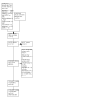
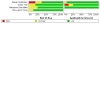

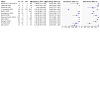


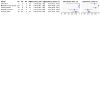

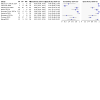

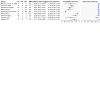

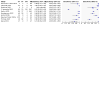
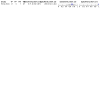
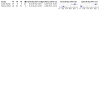
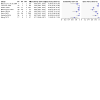
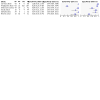
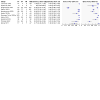
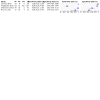
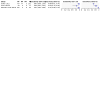
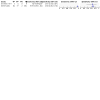
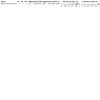
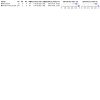
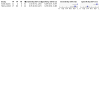
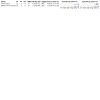
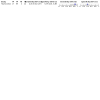
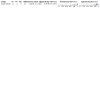
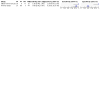
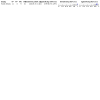

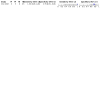


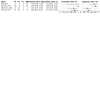

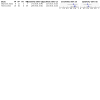
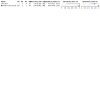

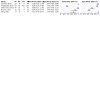
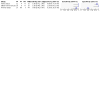

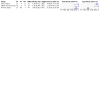
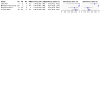


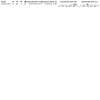
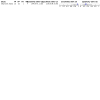
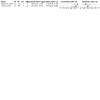
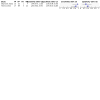
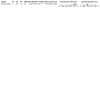
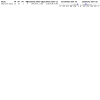
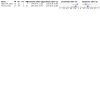
Update of
- doi: 10.1002/14651858.CD015089
References
References to studies included in this review
Batuecas‐Caletrio 2014 {published and unpublished data}
-
- Batuecas-Caletrío Á, Yáñez-González R, Sánchez-Blanco C, González-Sánchez E, Benito J, Gómez JC, et al. Peripheral vertigo versus central vertigo. Application of the HINTS protocol [Vértigo periférico frente a vértigo central. Aplicación del protocolo HINTS]. Revista de Neurologia 2014;59(8):349-53. - PubMed
Carmona 2016 {published and unpublished data}
Choi 2017 {published and unpublished data}
-
- Choi JH, Park MG, Choi SY, Park KP, Baik SK, Kim JS, et al. Acute transient vestibular syndrome: prevalence of stroke and efficacy of bedside evaluation. Stroke 2017;48(3):556-62. - PubMed
Dmitriew 2021 {published and unpublished data}
-
- Dmitriew C, Regis A, Bodunde O, Lepage R, Turgeon Z, McIsaac S, et al. Diagnostic accuracy of the HINTS exam in an emergency department: a retrospective chart review. Academic Emergency Medicine 2021;28(4):387-93. - PubMed
Filippopulos 2022 {published and unpublished data}
-
- Filippopulos FM, Strobl R, Belanovic B, Dunker K, Grill E, Brandt T, et al. Validation of a comprehensive diagnostic algorithm for patients with acute vertigo and dizziness. European Journal of Neurology 2022;29(10):3092-101. - PubMed
Gerlier 2021 {published and unpublished data}
-
- Gerlier C, Hoarau M, Fels A, Vitaux H, Mousset C, Farhat W, et al. Differentiating central from peripheral causes of acute vertigo in an emergency setting with the HINTS, STANDING, and ABCD2 tests: a diagnostic cohort study. Academic Emergency Medicine 2021;28(12):1368-78. - PubMed
Kmetonyova 2022 {published and unpublished data}
-
- Kmetonyova S, Paulasova Schwabova J, Sramkova T, Dankova M, Olserova A, Petrzalka M, et al. Posterior circulation stroke diagnosis in unselected group of acutely dizzy patients. Clinical Neurology and Neurosurgery 2022;224:107541. - PubMed
Korda 2022a {published and unpublished data}
Korda 2022b {published and unpublished data}
Newman‐Toker 2013a {published and unpublished data}
-
- Newman-Toker DE, Kerber KA, Hsieh YH, Pula JH, Omron R, Saber Tehrani AS, et al. HINTS outperforms ABCD2 to screen for stroke in acute continuous vertigo and dizziness. Academic Emergency Medicine 2013;20(10):986-96. - PubMed
Saber Tehrani 2013a {published and unpublished data}
Salim 2022 {published data only}
-
- Salim D, Kurian M, Ahmed N, Shukoor R. The sensitivity of a positive HINTS examination in identifying posterior circulation stroke. Hong Kong Journal of Emergency Medicine 2022;29(1 S):46S-7S.
Sankalia 2021 {published data only}
-
- Sankalia D, Kothari S, Phalgune DS. Diagnosing stroke in acute vertigo: sensitivity and specificity of HINTS battery in Indian population. Neurology India 2021;69(1):97-101. - PubMed
Siepmann 2021a {published and unpublished data}
Thomas 2022 {published and unpublished data}
Wang 2021 {published and unpublished data}
-
- Wang W, Zhang Y, Pan Q, Liu J, Zhu Y, Tan G, et al. Central nystagmus plus ABCD2 identifying stroke in acute dizziness presentations. Academic Emergency Medicine 2021;28(10):1118-23. - PubMed
References to studies excluded from this review
Choi 2018 {published data only}
-
- Choi JH, Oh EH, Park MG, Baik SK, Cho HJ, Choi SY, et al. Early MRI-negative posterior circulation stroke presenting as acute dizziness. Journal of Neurology 2018;265(12):2993-3000. - PubMed
Green 2021 {published data only}
-
- Green KE, Gold DR. HINTS examination in acute vestibular neuritis: do not look too hard for the skew. Journal of Neuro-ophthalmology 2021;41(4):e672-8. - PubMed
Kattah 2009 {published and unpublished data}
Keene 2015 {published data only}
-
- Keene NW. HINTS bedside exam: efficacy in improving detection of stroke in patients presenting to the ED for dizziness. School of Physician Assistant Studies 2015;526:1-27.
Kerber 2014 {published data only}
-
- Kerber KA, Meurer WJ, Brown DL, Adelman E, Hofer TP, Burke JF, et al. Discriminating stroke in acute dizziness presentations using bedside information. Annals of Neurology 2014;76(Suppl 18):S35.
Kohn 2014 {published data only}
-
- Kohn MA. HINTS to identify stroke in ED patients with dizziness. Academic Emergency Medicine 2014;21(3):347. - PubMed
Lee 2022 {published data only}
-
- Lee DH, Schneider E, Lee SY, Kim JS, Koo JW. Objective measurement of HINTS (Head Impulse, Nystagmus, Test of Skew) in peripheral vestibulopathy. Auris, Nasus, Larynx 2022;49(6):938-49. - PubMed
Ljunggren 2018 {published data only}
-
- Ljunggren M, Persson J, Salzer J. Dizziness and the acute vestibular syndrome at the emergency department: a population-based descriptive study. European Neurology 2018;79(1-2):5-12. - PubMed
Nakatsuka 2022 {published data only}
Newman‐Toker 2009a {published data only}
-
- Newman-Toker DE, Kattah JC. Acute vestibular syndrome-oculomotor signs more sensitive for stroke than MRI. Annals of Neurology 2009;66(Suppl 1):S7.
Newman‐Toker 2013b {published data only}
-
- Newman-Toker DE, Kerber KA, Hsieh Y-H, Pula JH, Omron R, Saber Tehrani AS, et al. HINTS outperforms ABCD2 to screen for stroke in acute vestibular syndrome. Annals of Neurology 2013;74(Suppl 17):S9. - PubMed
Newman‐Toker 2013c {published data only}
-
- Newman-Toker DE, Kerber KA, Hsieh Y-H, Pula JH, Omron R, Saber Tehrani AS, et al. Hints outperforms ABCD2 to identify stroke in acute vestibular syndrome. Academic Emergency Medicine 2013;20(5 Suppl 1):S50. - PubMed
Orinx 2022 {published data only}
Quimby 2018 {published data only}
Rau 2020 {published data only}
-
- Rau C, Terling L, Elkhodair S, Kaski D. Acute vertigo in the emergency department - a retrospective study. European Journal of Emergency Medicine 2020;27(Suppl 1):e4-5. - PubMed
Regis 2019 {published data only}
-
- Regis A, LePage R, Bodunde O, Turgeon Z, Ohle R. The HINTS exam: an often misused but potentially accurate diagnostic tool for central causes of dizziness. Canadian Journal of Emergency Medicine 2019;21(Supp 1):S102.
Siepmann 2021b {published data only}
-
- Siepmann T, Gruener C, Simon E, Winzer S, Sedghi A, Pallesen LP, et al. Caloric testing combined with assessment of nystagmus, skew and hearing loss outperforms conventional and video-oculography supported HINTS-Plus in detecting stroke presenting as acute vestibular syndrome. European Stroke Journal 2021;6(1 Suppl: ESOC Abstracts):177.
Staibano 2019 {published data only}
Tischer 2017 {published data only}
-
- Tischer C, Pallesen LP, Puetz V, Barlinn J, Timo S, Barlinn K. Diagnostic value of video oculography-based hints plus exam in acute vestibular syndrome: an ongoing study. European Stroke Journal 2017;2(1 Suppl):337.
Venhovens 2015 {published data only}
-
- Venhovens J, Meulstee J, Verhagen WI. The negative predictive value of the head impulse test, nystagmus, and test of skew deviation bedside oculomotor examination in acute vestibular syndrome. Annals of Emergency Medicine 2015;66(1):91-2. - PubMed
von Martial 2022 {published data only}
-
- Martial R, Leinweber C, Hubert N, Rambold H, Haberl RL, Hubert GJ, et al. Feasibility of telemedical HINTS (Head Impulse-Nystagmus-Test of Skew) evaluation in patients with acute dizziness or vertigo in the emergency department of primary care hospitals. Frontiers in Neurology 2022;12:768460. - PMC - PubMed
Zwergal 2018 {published data only}
-
- Zwergal A, Mohwald K, Hadzhikolev H, Bardins S, Brandt T, Dieterich M, et al. Development of a diagnostic index test for stroke as a cause of vertigo, dizziness and imbalance in the emergency room: first results from the prospective EMVERT trial. Clinical Neurophysiology 2018;129(8):e54.
Additional references
Amarenco 1994
-
- Amarenco P, Lévy C, Cohen A, Touboul PJ, Roullet E, Bousser MG. Causes and mechanisms of territorial and nonterritorial cerebellar infarcts in 115 consecutive patients. Stroke 1994;25(1):105-12. - PubMed
Black 2005
-
- Black RA, Halmagyi GM, Thurtell MJ, Todd MJ, Curthoys IS. The active head-impulse test in unilateral peripheral vestibulopathy. Archives of Neurology 2005;62(2):290-3. - PubMed
Bramer 2017
Brodsky 2006
-
- Brodsky MC, Donahue SP, Vaphiades M, Brandt T. Skew deviation revisited. Survey of Ophthalmology 2006;51(2):105-28. - PubMed
Byworth 2022
-
- Byworth M, Johns P, Pardhan A, Srivastava K, Sharma M. Factors influencing HINTS exam usage by Canadian Emergency Medicine Physicians. Canadian Journal of Emergency Medicine 2022;24(7):710-8. - PubMed
Chalela 2007
Chase 2014
Chen 2018
-
- Chen R, Su R, Deng M, Liu J, Hu Q, Song Z. A posterior circulation ischemia risk score system to assist the diagnosis of dizziness. Journal of Stroke and Cerebrovascular Diseases 2018;27(2):506-12. - PubMed
Chu 2006
-
- Chu H, Cole SR. Bivariate meta-analysis of sensitivity and specificity with sparse data:a generalized linear mixed model approach. Journal of Clinical Epidemiology 2006;59(12):1331-2. - PubMed
Cnyrim 2008
-
- Cnyrim CD, Newman-Toker D, Karch C, Brandt T, Strupp M. Bedside differentiation of vestibular neuritis from central "vestibular pseudoneuritis". Journal of Neurology, Neurosurgery, and Psychiatry 2008;79(4):458-60. - PubMed
Dallara 1994
-
- Dallara J, Lee C, McIntosh L, Sloane PD, Morris D. ED length-of-stay and illness severity in dizzy and chest-pain patients. American Journal of Emergency Medicine 1994;12(4):421-4. - PubMed
Duncan 1975
-
- Duncan GW, Parker SW, Fisher CM. Acute cerebellar infarction in the PICA territory. Archives of Neurology 1975;32(6):364-8. - PubMed
GRADEpro GDT [Computer program]
-
- GRADEpro GDT. Version accessed 25 May 2023. Hamilton (ON): McMaster University (developed by Evidence Prime). Available from gradepro.org.
Grosse‐Dresselhaus 2014
Halmagyi 1988
-
- Halmagyi GM, Curthoys IS. A clinical sign of canal paresis. Archives of Neurology 1988;45(7):737-9. - PubMed
Hornig 1994
-
- Hornig CR, Rust DS, Busse O, Jauss M, Laun A. Space-occupying cerebellar infarction. Clinical course and prognosis. Stroke 1994;25(2):372-4. - PubMed
Hotson 1998
-
- Hotson JR, Baloh RW. Acute vestibular syndrome. New England Journal of Medicine 1998;339(10):680-5. - PubMed
Häusler 2000
-
- Häusler R, Levine RA. Auditory dysfunction in stroke. Acta Oto-laryngologica 2000;120(6):689-703. - PubMed
Kerber 2006
Krishnan 2019
Kroenke 1998
-
- Kroenke K, Jackson JL. Outcome in general medical patients presenting with common symptoms: a prospective study with a 2-week and a 3-month follow-up. Family Practice 1998;15(5):398-403. - PubMed
Lee 2006
-
- Lee H, Sohn SI, Cho YW, Lee SR, Ahn BH, Park BR, et al. Cerebellar infarction presenting isolated vertigo: frequency and vascular topographical patterns. Neurology 2006;67(7):1178-83. - PubMed
Lee 2012
-
- Lee H. Audiovestibular loss in anterior inferior cerebellar artery territory infarction: a window to early detection? Journal of the Neurological Sciences 2012;313(1-2):153-9. - PubMed
Lin 2008
-
- Lin HC, Chao PZ, Lee HC. Sudden sensorineural hearing loss increases the risk of stroke: a 5-year follow-up study. Stroke 2008;39(10):2744-8. - PubMed
Machner 2020
Newman‐Toker 2008a
Newman‐Toker 2008b
-
- Newman-Toker DE, Kattah JC, Alvernia JE, Wang DZ. Normal head impulse test differentiates acute cerebellar strokes from vestibular neuritis. Neurology 2008;70(24 Pt 2):2378-85. - PubMed
Newman‐Toker 2009B
-
- Newman-Toker DE, Sharma P, Chowdhury M, Clemons TM, Zee DS, Della Santina CC. Penlight-cover test: a new bedside method to unmask nystagmus. Journal of Neurology, Neurosurgery, and Psychiatry 2009;80(8):900-3. - PubMed
Norrving 1995
-
- Norrving B, Magnusson M, Holtås S. Isolated acute vertigo in the elderly; vestibular or vascular disease? Acta Neurologica Scandinavica 1995;91(1):43-8. - PubMed
Ohle 2020
-
- Ohle R, Montpellier RA, Marchadier V, Wharton A, McIsaac S, Anderson M, et al. Can emergency physicians accurately rule out a central cause of vertigo using the HINTS examination? A systematic review and meta-analysis. Academic Emergency Medicine 2020;27(9):887-96. - PubMed
Oppenheim 2000
Page 2021
Reitsma 2005
-
- Reitsma JB, Glas AS, Rutjes AW, Scholten RJ, Bossuyt PM, Zwinderman AH. Bivariate analysis of sensitivity and specificity produces informative summary measures in diagnostic reviews. Journal of Clinical Epidemiology 2005;58(10):982-90. - PubMed
RevMan Web 2023 [Computer program]
-
- Review Manager Web (RevMan Web). Version 6.1. The Cochrane Collaboration, 2023. Available at revman.cochrane.org.
Saber Tehrani 2013B
-
- Saber Tehrani AS, Coughlan D, Hsieh YH, Mantokoudis G, Korley FK, Kerber KA, et al. Rising annual costs of dizziness presentations to U.S. emergency departments. Academic Emergency Medicine 2013;20(7):689-96. - PubMed
Schünemann 2020a
-
- Schünemann HJ, Mustafa RA, Brozek J, Steingart KR, Leeflang M, Murad MH, et al. GRADE guidelines: 21 part 1. Study design, risk of bias, and indirectness in rating the certainty across a body of evidence for test accuracy. Journal of Clinical Epidemiology 2020;122:129-41. - PubMed
Schünemann 2020b
-
- Schünemann HJ, Mustafa RA, Brozek J, Steingart KR, Leeflang M, Murad MH, et al. GRADE guidelines: 21 part 2. Test accuracy: inconsistency, imprecision, publication bias, and other domains for rating the certainty of evidence and presenting it in evidence profiles and summary of findings tables. Journal of Clinical Epidemiology 2020;122:142-52. - PubMed
Simmons 1986
-
- Simmons Z, Biller J, Adams HP Jr, Dunn V, Jacoby CG. Cerebellar infarction: comparison of computed tomography and magnetic resonance imaging. Annals of Neurology 1986;19(3):291-3. - PubMed
Stata [Computer program]
-
- Stata. Version 15. College Station, TX, USA: StataCorp, 2017. Available at www.stata.com.
Sypert 1975
-
- Sypert GW, ALvord EC Jr. Cerebellar infarction. A clinicopathological study. Archives of Neurology 1975;32(6):357-63. - PubMed
Takwoingi 2017
Warner 2022
Whiting 2011
-
- Whiting PF, Rutjes AW, Westwood ME, Mallett S, Deeks JJ, Reitsma JB, et al. QUADAS-2: a revised tool for the quality assessment of diagnostic accuracy studies. Annals of Internal Medicine 2011;155(8):529-36. [PMID: ] - PubMed
References to other published versions of this review
Publication types
MeSH terms
LinkOut - more resources
Full Text Sources
Medical

